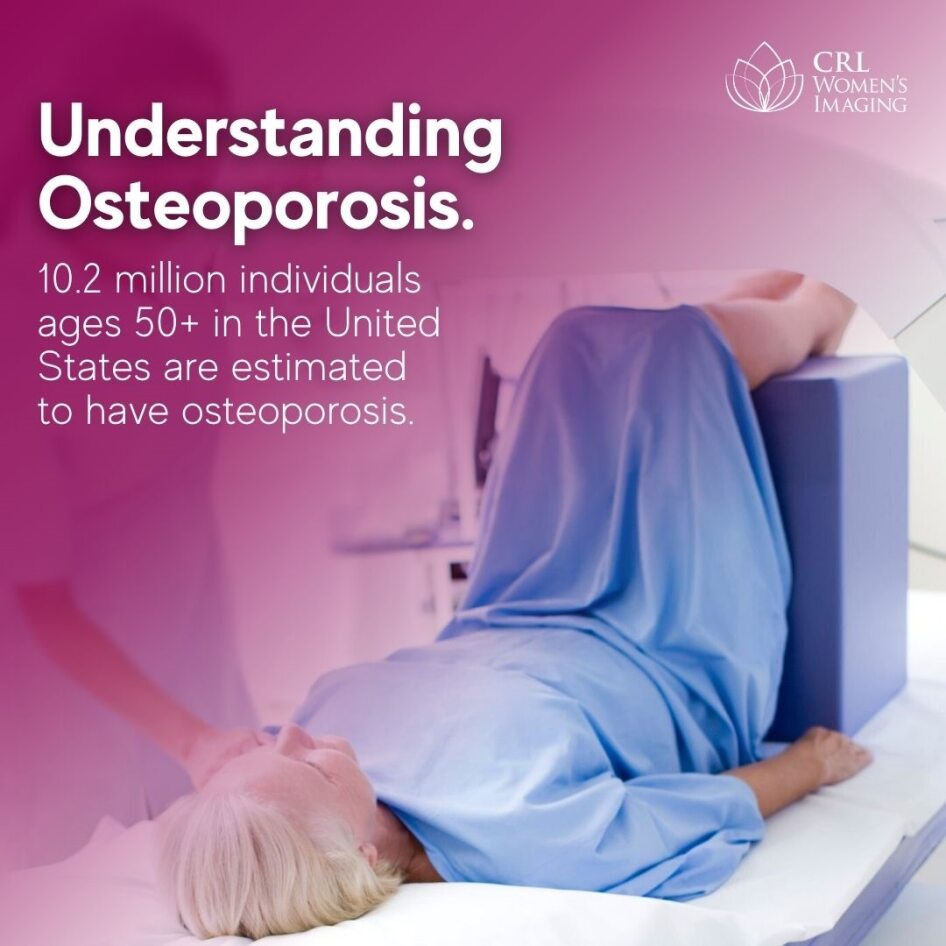
Osteoporosis in Women: Understanding Risks, Diagnosis, and Prevention
As we age, our bodies undergo various transformations that we can’t help but notice—like subtle shifts in our energy levels or the occasional ache in our muscles. However, amidst these visible signs, one change often goes unnoticed: a decrease in bone density. Our bones are essential to our body’s functionality, from providing structural support to facilitating mobility. Taking care of our bones is essential, particularly for women, who are more susceptible to developing osteoporosis than men.
What is Osteoporosis?
Osteoporosis is a disease that occurs when bone density or mass is lost. It happens when the body does not produce enough bone, loses too much bone, or both. As a result, bones become weak and can easily break. The Bone Health and Osteoporosis Foundation reports that 54 million Americans have reduced bone mass, and that osteoporosis causes 1 in 2 fractured bones in mature women. Due to smaller and thinner bones, osteoporosis affects women more frequently than men. As women enter menopause, the likelihood of osteoporosis rises due to a decrease in estrogen levels, resulting in a slowing of bone growth.
How is Osteoporosis Diagnosed?
Dual Energy X-ray Absorptiometry (DXA) is the standard method for evaluating bone mineral density and diagnosing osteoporosis. This advanced imaging technology provides a precise measurement of the bone density in your body and measures the risk for potential bone fractures by using the Fracture Assessment Tool (FRAX). FRAX helps predict the likelihood of fractures over ten years in men and post-menopausal women. One key benefit of DXA is its ability to measure changes in bone mass and density over time accurately. This allows your healthcare provider to monitor the progression or improvement of your bone health, especially if you are undergoing treatment for osteoporosis.
Should I get a DXA Scan?
DXA is a noninvasive, painless exam that takes only 30 minutes. It is recommended that women 65 and older receive DXA screening for osteoporosis. DXA may be recommended for women with certain risk factors as early as age 50. If you have questions or wish to schedule a DXA screening, reach out to your primary care provider for a referral.
Risk Factors
Several risk factors for osteoporosis are considered unchangeable and changeable.
Unchangeable Risk Factors:
- Family history of osteoporosis and/or fractures
- Aging
- Gender: women are more likely to develop osteoporosis, especially those who have gone through menopause
- Caucasian or Asian heritage
Changeable Risk Factors:
- Certain medications, like steroids or anti-seizure medications (Note: Always follow your doctor’s prescription unless advised otherwise.)
- Low estrogen levels in women or low testosterone levels in men
- Lack of exercise
- Smoking cigarettes
- Excessive alcohol intake
- Vitamin D deficiency
Prevention
There are many ways you can work to prevent osteoporosis. Eating a balanced and nutritious diet helps ensure adequate calcium and Vitamin D intake, which protects and fortifies your bones. Incorporating weight-bearing exercises like walking, climbing stairs, or lifting weights into your routine can catalyze bone growth. Additionally, healthy lifestyle habits such as avoiding smoking and limiting alcohol and caffeine intake can help improve your overall bone health. Including these preventative measures can help you maintain strong, healthy bones and reduce your risk of developing osteoporosis.
Importance for Women
Women juggle various life responsibilities, and having strong bones is crucial to uphold each role. By understanding their risk factors, women can protect their bone health, mitigate the risk of osteoporosis and fractures, and sustain a vibrant and active lifestyle regardless of age. CRL Women’s Imaging is proud to be your trusted partner, offering care and access to imaging, empowering Minnesota women to gain deeper insights into their health.
About CRL Women’s Imaging
CRL Women’s Imaging is a leader in outpatient imaging and designated as Breast Center of Excellence by the American College of Radiology (ACR). Our team of dedicated, board-certified breast imagers with broad expertise and a genuine interest in breast imaging and our knowledgeable technologists certified in mammography and ultrasound are committed to provide our patients with the high-quality compassionate care they can trust.
“Early detection of breast cancer saves lives. And with the tools of 3D mammography/tomosynthesis and supplemental screening breast ultrasound we are better equipped than ever to positively impact women’s health.” – Jillian Karow, MD, Medical Director, CRL Women’s Imaging
JOIN OUR COMMUNITY
Want to know what we’re up to?